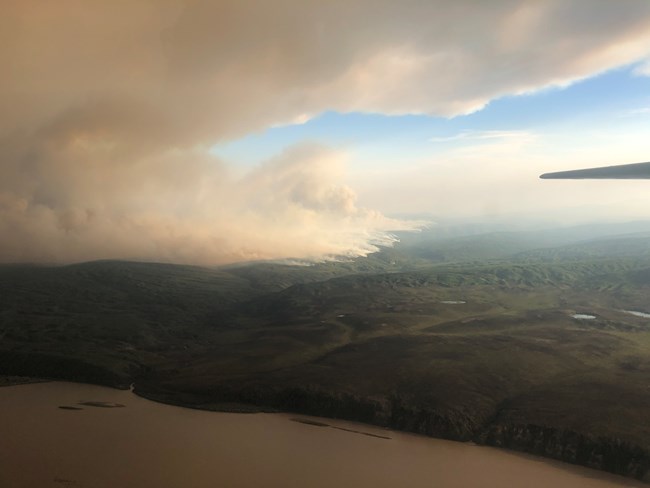Last updated: July 26, 2021
Article
Strong Partnerships Help Protect Significant Historical and Scientific Sites in Yukon-Charley Rivers National Preserve
Annually, an average of 20,000 acres burns in wildfires at Yukon-Charley Rivers National Preserve (the preserve), nearly all of which start naturally. Human life and important cultural and natural resources are protected from wildfires, but fires that start naturally are not always aggressively put out. Instead, they are put in a Limited Management Option, in which they are allowed to burn so that fire continues to play its natural role within this fire-dependent ecosystem. Protection of historical sites and modern scientific equipment stationed within the hard-to-reach wilderness poses unique challenges. To overcome these challenges, National Park Service (NPS) staff work together with the Alaska Fire Service (AFS) for protection of structures and management of wildfires.

Alaska Fire Service
The Cultas Creek Fire #223 began with a lightning strike and was detected by National Park Service fire ecologists working in the area on June 17th. By early July 2021, the fire was burning within one mile of the Sam Creek Cabin, one of the oldest log structures in the preserve.

Alaska Fire Service

NPS

NPS
